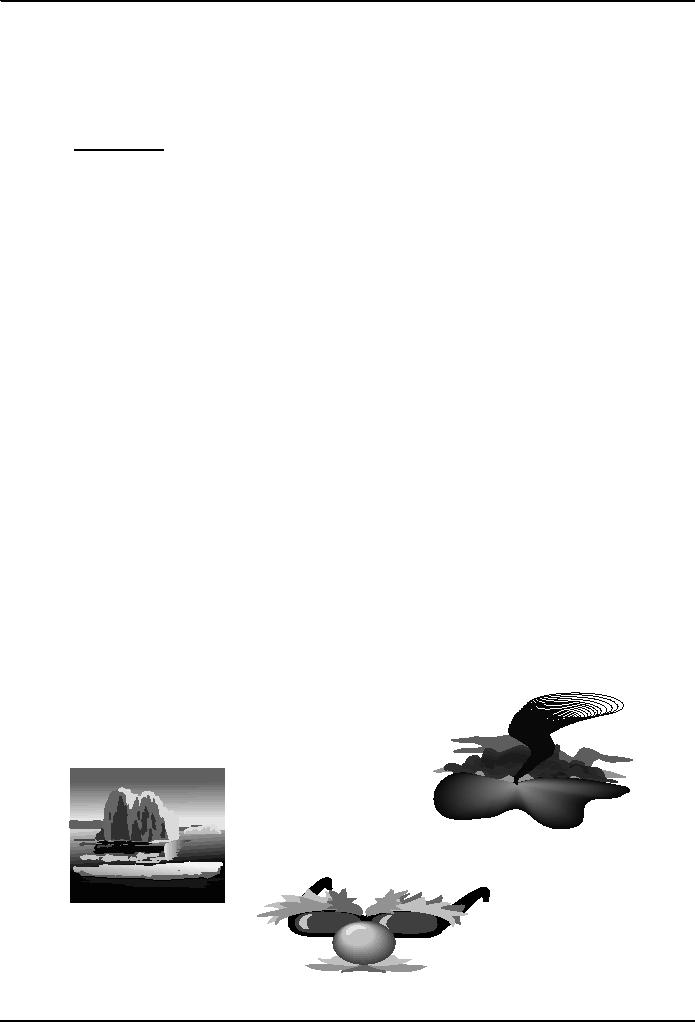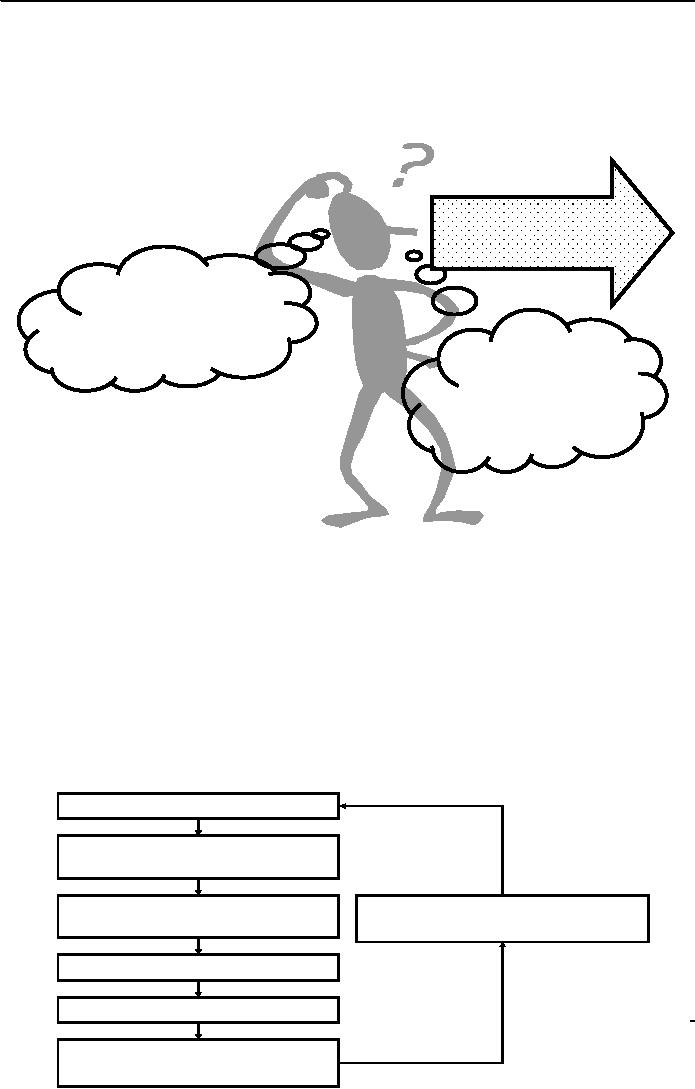 |

Conflict
Management HRM624
VU
Lesson
7
RECURRENT
THEMES IN CONFLICT DIAGNOSIS
I
Quotation
"No
doubt there are other
important things in life besides
conflict, but there are
not many other things
so
inevitably
interesting. The very saints interest us
most when we think of them as engaged in
a conflict with
the
Devil." Robert
Lynd
Nelson
Mandella had been in
conflict through out his
life and now he is one of
the most respected
persons
in the
world.
In this
lecture we will try to
understand the circumstances in which
human beings misperceive,
misinterpret,
and
mistreat during interpersonal
conflict.
Understanding
and diagnosing interpersonal conflict
Interpersonal
conflict is part of everyday
life. It exists when there
is incompatibility of goals. It occurs
in
every
type of relationship. In interpersonal conflict, what we
think we see is often not what
really goes on.
Also
what the other disputant is responding to is often
not what we think he or she is responding
to.
Conflict
is not necessarily a negative phenomenon;
it also plays a positive
role in everyday life. When
we see
some
relationship prima facie without
conflict, it can not
necessarily be taken as good or
healthy
relationship. There
must be some hidden conflicts
which may be more harmful
for a relationship as
compared
with some known conflict.
These relationships may include workplace
relationships, business
relationships,
family relationships, or relationships
among friends. Hostility and
resentment can
destroy
interpersonal
relationships whereas conflict
may be productive if taken
positively. Disputants may solve
the
problems
by resolving the conflicting
issues.
Sources
of conflict are usually hidden
Opposing
needs, ideas, goals and
interests may be the sources of
conflict. Conflicts may be
real and/or
perceived
(Corvette, 2007). Conflict is a very complex
and multifaceted phenomenon. Most of the time, it
is
not
what we see or perceive rather it is
something else and somewhere
else. It is often heard that
perception
is
more important than reality.
Our perceptions affect most of the
part of our behavior and
attitude.
Social
and cognitive psychology provides a
cognitive structure to understand complex
and paradoxical
ideas.
For
better understanding and diagnosis of the
conflict one must be fully
aware of the predisposition of the
issue.
Conflict is never quite what
it
seems
�
Interpersonal conflict is
like...
An iceberg
Funny
glasses
A tornado
�
Conflict
is like a tornado it's very
disorienting and disturbing.
27

Conflict
Management HRM624
VU
B. Disputants
use one another's conduct to
diagnose conflict. It leads to
ever-widening errors of
perception
and judgment by parties in
conflict.
What Is The
Other
Disputant
Thinking?
Result: My
beliefs
about his or
her
motives
My
preconceived
notions and
beliefs
about the conflict
and
disputant
My observations
of
the other
disputant
during the
conflict
The
Seven Steps of Social
Behavior
Developmental
and basic psychological
theories can provide a step
by step model of conflict
response.
Conflict
is based on subjectivity and perception.
Many opportunities for error
exist in all social
interactions.
Experience
is greatly subjective (based on
personal beliefs or feelings rather than
facts). Hence interpersonal
conflict
is subjective. Accordingly its
understanding is difficult. That is
why ADR is useful
for
understanding
conflict. Perceptual distortions
are very important for
ADR.
ADR
depends upon perceptions of
parties. Negotiation process
actually addresses perception and
brings
Seven Steps of Conflict
Diagnosis
1. Social
stimulus
2. Disputant receives
stimulus
3. Stimulus
7. Disputant acts;
new
interpretation
stimulus created
4. Option
generation
5. Weighing
options
28
6. Disputant chooses
an
option

Conflict
Management HRM624
VU
people
closer in their
views.
Seven
steps to diagnose conflict
1.
Social Stimulus
A
stimulus is something in one's
environment that stimulates a
reaction.
A
social stimulus is a stimulus
emanating from another individual or
from the social setting or
situation.
Social
stimuli can be verbal, nonverbal
(e.g., body language) or contextual
(e.g., where and when
behavior
took
place).
2.
Disputant receives the
social stimulus with his or
her senses
Remember
that receiving the stimulus is only the
first part of perception
the
other essential part
is
interpretation.
Stimulus reception can be prone to
error.
3.
Disputant interprets what he or
she has seen/heard/sensed
What
is it? It's the assigning of
meaning to a received stimulus by the
observer.
This is the
second half of perception. This important
half of perception often goes
unrecognized
perception is
often misunderstood as an "objective"
rendering of a real-world event. But in
reality,
perception
can be very subjective. "Error"
occurs during interpretation
because virtually every
received
stimulus
has ambiguous
components.
During
interpersonal conflict, the disputants
will tend to use one
another's behavior to make
guesses and
draw
conclusions about one
another's motivations and
likely next moves. The
stress of interpersonal
conflict
worsens the tendency to make
errors.
Specific
sources of interpretational
error:
a.
Actor did not intend
his or her actions.
b. Use
of a heuristic. It is defined as mental
shortcuts that facilitate the
interpretational phase of
perception
c.
Negative heuristics that
tend to be associated with
escalated conflict.
d.
Self-fulfilling-prophecy behavioral responses to
application of a heuristic by the
observer.
e.
Application of heuristics is associated
with high levels of stress
and reduced mental and
emotional
resources
(as during conflict).
f.
Influenced by individual contextual
factors and motivational
factors.
4.
Disputant generates options
for responding.
Option
generation will be more or less
abbreviated or detailed, depending on the importance
of the
situation, the
stress and arousal level of the
observer, and the cognitive
resources of the observer.
5.
Disputant weighs the
options.
If
more than one option is
generated, the observer will
have to choose which action to
take, and at some
level he or
she will do this by weighing the costs
and benefits of each.
Sources
of cost-benefit assessments used in
analysis:
Factors
that influence weights given to
options:
i.
Factors that influence availability of
mental resources such as
complexity, fatigue, emotional
arousal
ii.
Salience of particular issues in the
present context
iii.
Blueprints about interpersonal conflict and
how it should be resolved
iv.
Personal values assigned to the
likely possible outcomes of the
options (both positive and
negative)
v. The
weighing of options is often wholly or
partially unconscious.
29

Conflict
Management HRM624
VU
6.
Disputant chooses an action
Stable
source is perceived self-efficacy
whereas transient source include time
limitations, cognitive overload,
and
attention robbing
factors.
7.
Disputant acts, creating a
new social
stimulus.
1.
Because of deficiencies in actual
self-efficacy (proficiency), the action that
occurs may not be the
one
intended.
2. Proficiency is
not a stable trait and it is
impaired by stress.
3.
Even proficiently executed
tactics sometimes
fail.
4. Due
to errors in interpretation or judgment
made by the disputant about the
situation.
5. Due
to mistaken beliefs about the
effectiveness of various blueprints
and their tools.
6. Due
to changes in the situation.
7. Due
to chance the tactic may
carry a known risk that was
assumed by the actor.
8.
Actions become social
stimuli.
30
Table of Contents:
- INTRODUCTION TO CONFLICT:Dispute, Legal Dispute, Call the police
- DISPUTE RESOLUTION 1:Positive affect in Negotiation, Alternative Dispute Resolution
- DISPUTE RESOLUTION II:Adjudication, Litigation, Mediation-Arbitration
- PRECONCEPTIONS ABOUT CONFLICT I:Pedagogical development, Pressures against Innovation
- PRECONCEPTIONS ABOUT CONFLICT II:Cultural beliefs about interpersonal conflict, Why strategies of change fail
- CONFLICT DIAGNOSIS:Who Needs to Know About Conflict Diagnosis?, Steps in Conflict Diagnosis
- RECURRENT THEMES IN CONFLICT DIAGNOSIS I:The Seven Steps of Social Behavior, Seven steps to diagnose conflict
- RECURRENT THEMES IN CONFLICT DIAGNOSIS II:Themes of Conflict Diagnosis
- DESCRIBING THE CONFLICT I:Description of Conflict, Identifying Interpersonal Conflict
- DESCRIBING THE CONFLICT II:Step 1 for Conflict Diagnosis, interpersonal or intrapersonal
- SOURCES AND CAUSES OF CONFLICT I:Main Sources of Conflict, Discussing major sources of conflict
- SOURCES AND CAUSES OF CONFLICT II
- INTEREST ANALYSIS I:Analyzing your interests, Analyzing the other disputant’s interests
- INTEREST ANALYSIS II:What are interests?, Tips for Interest Trees
- INTEREST ANALYSIS II:Principles and values, Basic Human Needs
- ASSESSING THE CHARACTER OF THE CONFLICT I, Premises of Deutsch’s Theory
- ASSESSING THE CHARACTER OF THE CONFLICT II:Techniques to transform competitive conflict into cooperative
- TRUST AND ITS SIGNIFICANCE I:What is Mistrust,Trust and business,Three levels of trust
- TRUST AND ITS SIGNIFICANCE II:Advantages of high trust level, Building of trust
- ASSESSING IMPEDIMENTS TO RESOLVE THE CONFLICT I:Motivation to seek vengeance, Mistrust
- ASSESSING THE IMPEDIMENTS TO RESOLVING THE CONFLICT II:Disempowered Disputant, Unpleasant Disputant
- ASSESSING THE NEGOTIATING STYLE I:Dual Concern Model, Dominating or competition style
- ASSESSING THE NEGOTIATING STYLE:Dual Concern Model, Tactics Used In Integrating
- ASSESSING POWER AMONG DISPUTANTS:Conflict and Power, Kinds of power in the Relationship Domain
- ASSESSING POWER AMONG DISPUTANTS II:Sources of Relationship Power, Context and Power
- POWER, CONFLICT, AND BATNA III:Role of Third Party in BATNA, Dealing with Power Imbalance
- STEREOTYPES, DIVERSITY, AND CONFLICT I:Stereotyping, Stereotyping in Interpersonal Conflict
- STEREOTYPES, DIVERSITY, AND CONFLICT:Categories of Diversity Issues, Seven Mental Processes to Prove Stereotypes
- STEREOTYPES, DIVERSITY AND CONFLICT III:Individual Difference and Social Category, Cultural differences in values
- MEDIATION I:When is mediation required, Processes Related to Mediation, Product of Mediation
- MEDIATION II:Important distinguishing factors, More Advantages and Disadvantages of Pure Mediation
- ADVANTAGES AND DISADVANTAGES OF MEDIATION I:Efficiency Consideration, Conflict Management and Prevention
- ADVANTAGES AND DISADVANTAGES OF MEDIATION II:Quality of Consent, Effects on the parties to mediation
- PROCESS OF MEDIATION:Stages of Mediation, Facilitative tactics in mediation
- LAW AND ETHICS OF MEDIATION I:Characteristics of mediation, Confidentiality
- LAW AND ETHICS OF MEDIATION II:Role of ethics in mediation, 8 Dimensions of Ethics in Mediation
- ARBITRATION I:Ways to Resolve Conflict, Advantages of Arbitration, Disadvantages of Arbitration
- ARBITRATION II:Varieties of Arbitration, Process of Arbitration, Contents of Arbitration Act
- NON BINDING EVALUATION:Disadvantage, Varieties of Non-binding Evaluation
- NON BINDING EVALUATION II:Varieties of Non-binding Evaluation, Advantages and disadvantages of Non-binding Evaluation
- MIXED AND MULTIMODAL DISPUTE RESOLUTION:Six System Design Principles, Extensions of Dispute Systems Design
- POWER TOOLS AND MAGIC KEYS I:Introduction, Necessity of conflict diagnosis, Using conflict diagnosis
- POWER TOOLS AND MAGIC KEYS II:Proposed Contents of a Clients’ Interview, Impediments to use facilitative mediation
- PANCHAYAT, LOCAL GOVERNMENT SYSTEM, AND ADR, Definitions of Panchayat, Definition of Jirga
- SUMMARY AND MESSAGE OF THE COURSE:Definitions of conflict, Negotiation, Meditation, Adjudication